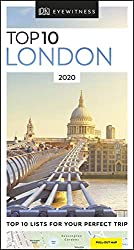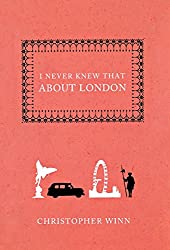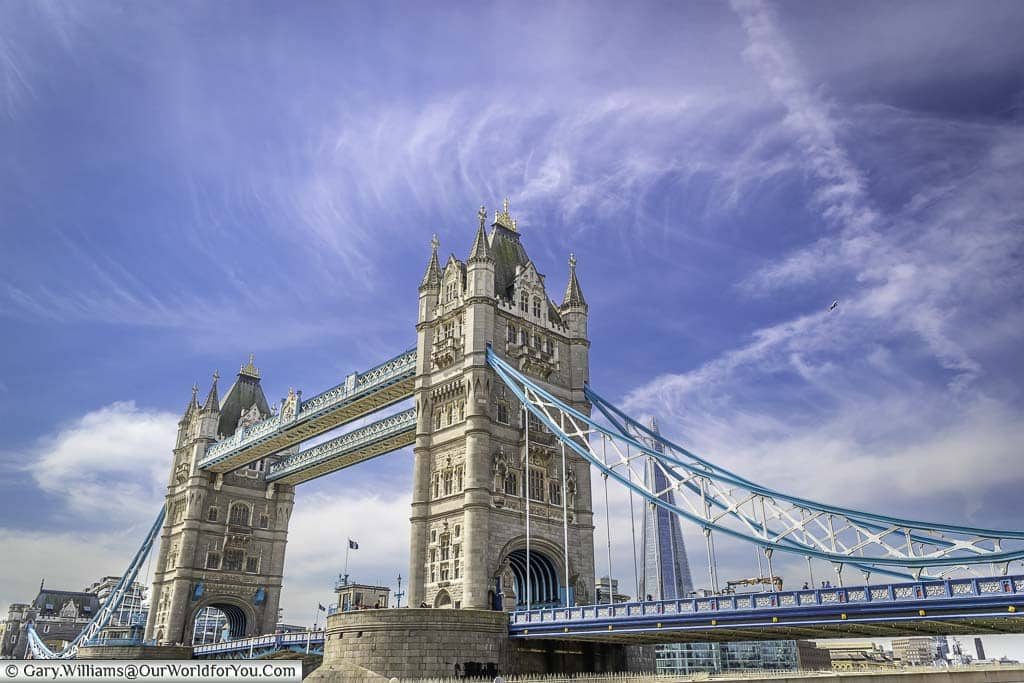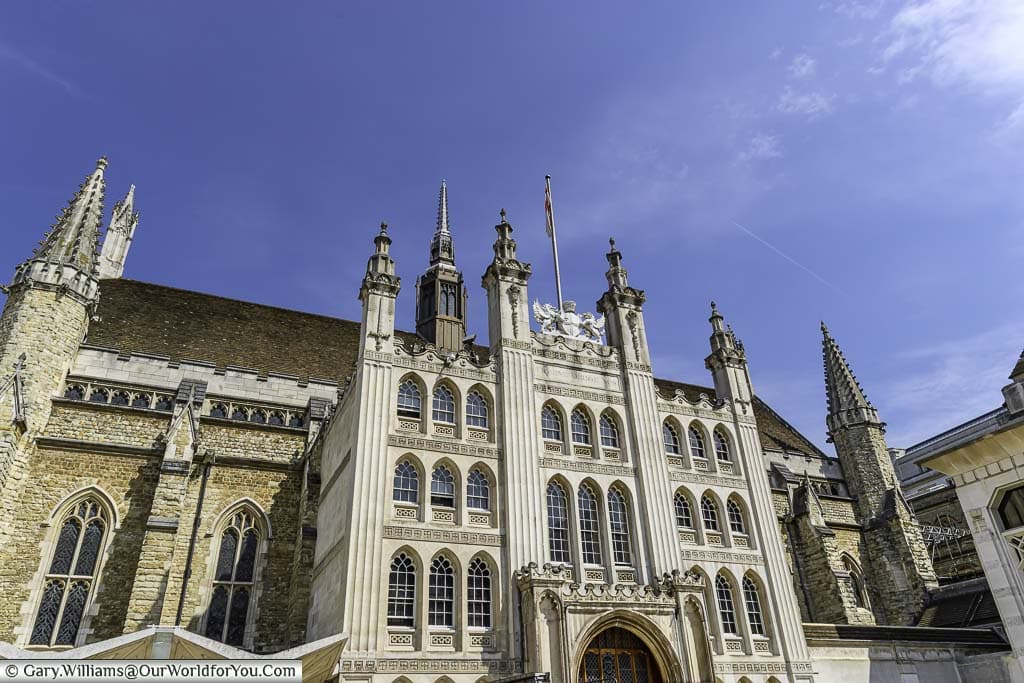A Square Mile full of history, intrigue and a towering Gherkin
Oh yes, I’m back on to one of my beloved subjects again, and that’s London, more specifically the City of London.
It doesn’t matter how many times we return, there is always something new that we discover. Despite the fact that the financial City of London only covers one Square Mile, the alleyways and passages that weave amongst the centuries of history are captivating.
Stroll down a lane, you wouldn’t usually take or wander along a winding route to your next destination. Look up, look down there are historical secrets hidden everywhere.
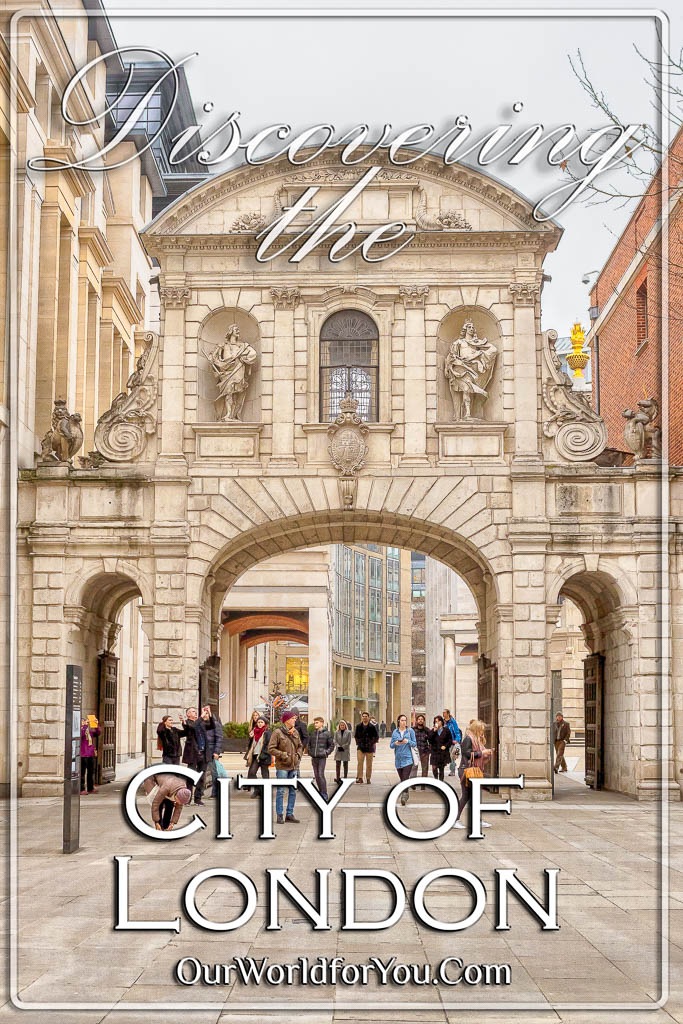
Where is the City of London?
The City of London is one of two cities in London; the other is the City of Westminster (more of that later).
Known as the 'Square Mile', the Roman city of Londinium was founded here in around AD 47–50. It is known as the financial centre of London (something Canary Wharf is trying to change).
A tourist in the ‘City’
Deserted streets of LondonThe City of London is one of those unusual places whereby it is predominantly weighted towards one industry. In the case of the City of London, it’s finance from top to toe.
From the tip of ‘The Gherkin’ soaring high above, to the Roman artefacts discovered beneath Bloomberg’s European headquarters in Queen Victoria Street.
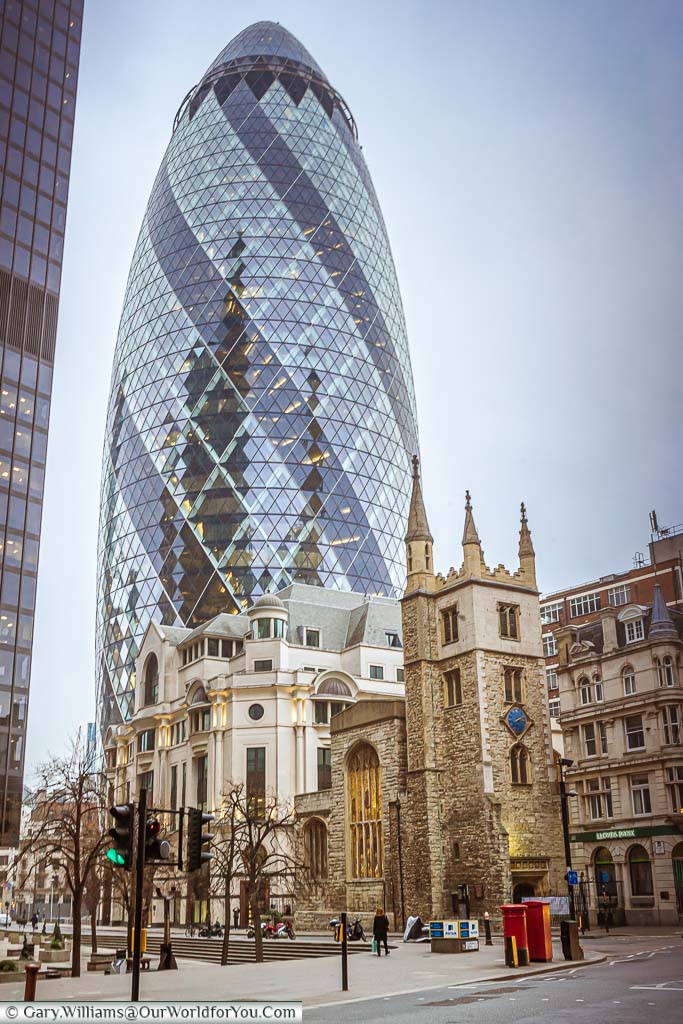
What makes this region so unique is that very few people permanently live in the City. Therefore, at the weekends when the city-folk have headed home after their working week, it becomes a ghost-town.
Conversely, this is when I adore it the most, and we’re free to wander aimlessly, not stepping into anyone’s path. That’s when I can truly become a proper tourist in my hometown.
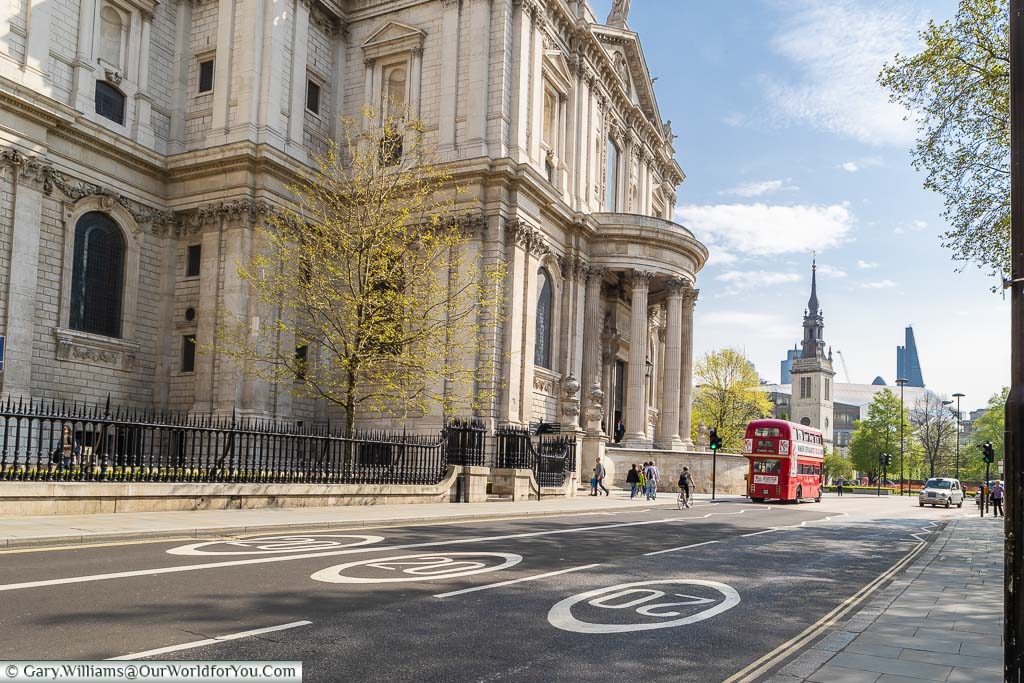
If you've yet to discover London and its ancient history, then let's start planning. I find these DK Eyewitness Travel Guides invaluable. They're extremely informative, easy to follow, and the pictures and maps tempt you into discovering more of those fascinating sites.
You can now grab a recently revised copy of this guidebook, so you won't miss a thing.
Entrance to the City of London
Crossing the path of the silver dragonYou’ll know you’ve arrived in the City when you’ve crossed the path of the City of London Dragon boundary marker.
The thirteen cast-iron silver dragons sit high on plinths, holding a shield that bears the City of London's coat of arms. They are located on the main roads that enter into the City.
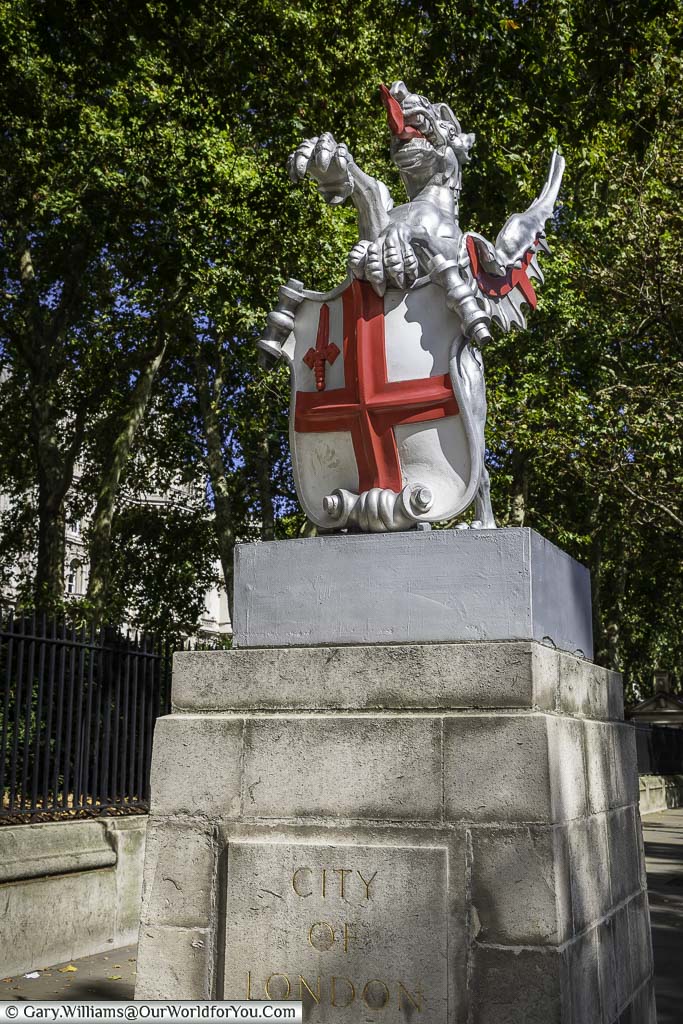
One that is particularly important is at Temple Bar. Where The Strand from the west within the City of Westminster artfully becomes Fleet Street as you enter east into the City of London.
The dragon that is located here stands on the site of Temple Bar Gate. The original Bar Gate escaped The Great Fire of London in 1666; however, a new gate was commissioned to Sir Christopher Wren by Charles II.
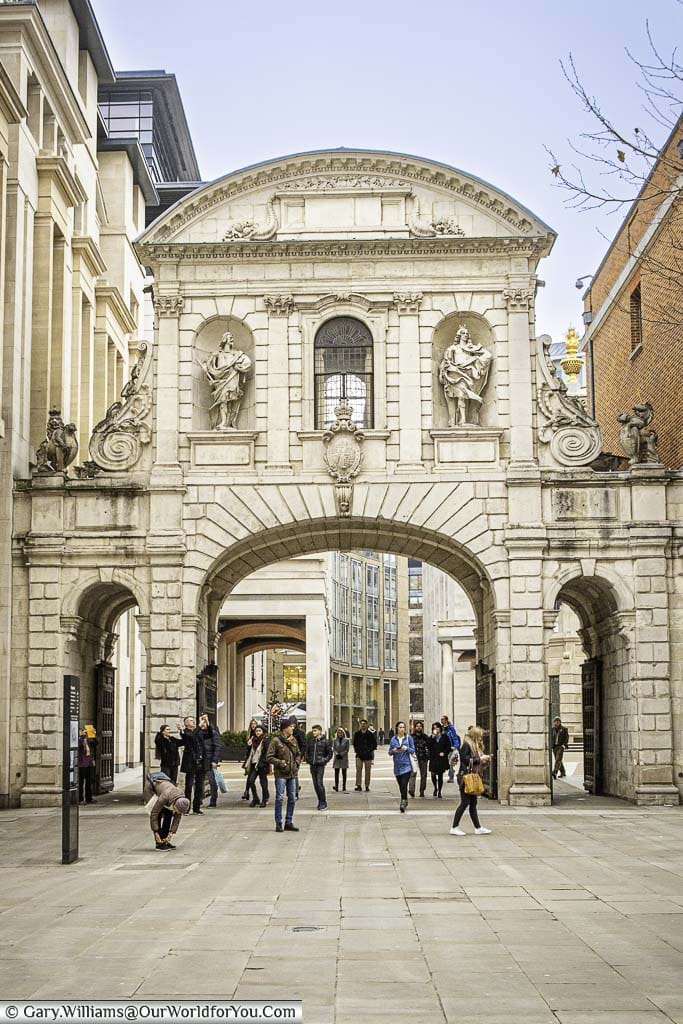
Due to increased traffic flow through the ancient gate, in 1878, Temple Bar was dismantled. Oddly the gate was then purchased and erected on an estate in Hertfordshire, England where it remained until 2003.
Owing to its significance, in 2004 it was restored and re-erected at the Paternoster Square entrance next to St Paul’s Cathedral.
‘First Dates’ fans may recognise the Paternoster Chop House in Paternoster Square.
We have a little book on our shelves that we sometimes delve into when we're about to hit an area of London.
Packed full of historical facts, and broken down into the different regions of London, it's a great resource to help you see what's hidden in plain sight.
Available in Kindle & Hardback editions, it's an excellent addition to anyone's collection who loves London.
Where are the City of London’s roads?
The weird and wonderful street names
They may even refer to trades or professions flourishing in the area many moons ago, such as Ironmonger Lane or Cloth Fair.
The ones I especially like are Barely Mow Passage, Huggin Hill and Savage Gardens. Have a wander and see which ones catch your eye?
London’s Blue Plaques
Remembering the city's historyDon’t forget while you’re strolling the City lanes to look out for the Blue Plaques dotted around London's streets.
They tell an interesting story of the past lives of heroines and heroes who have lived or worked within the area. Or curious facts relating to the district.
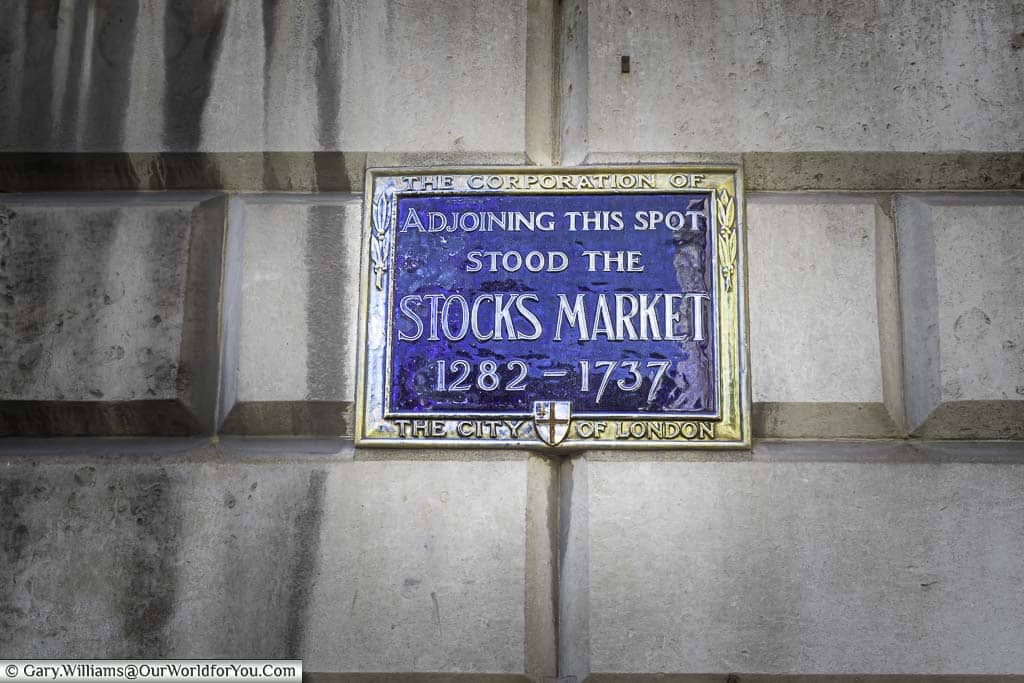
Where to stay in London
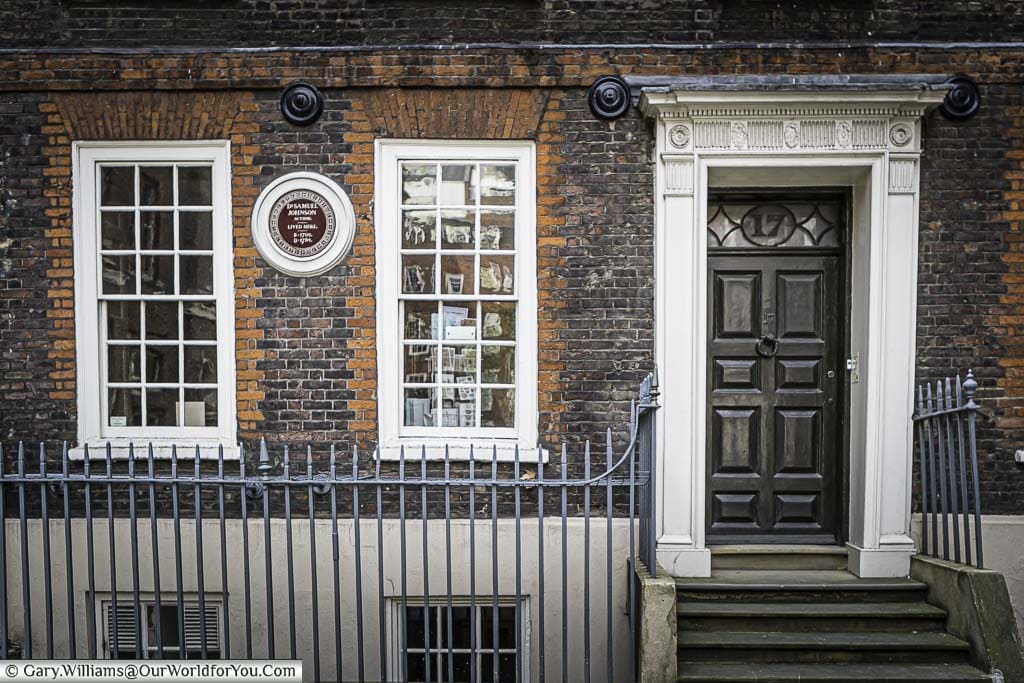
Discover more of London
The Great Fire of London
Did it actually start at Pudding Lane?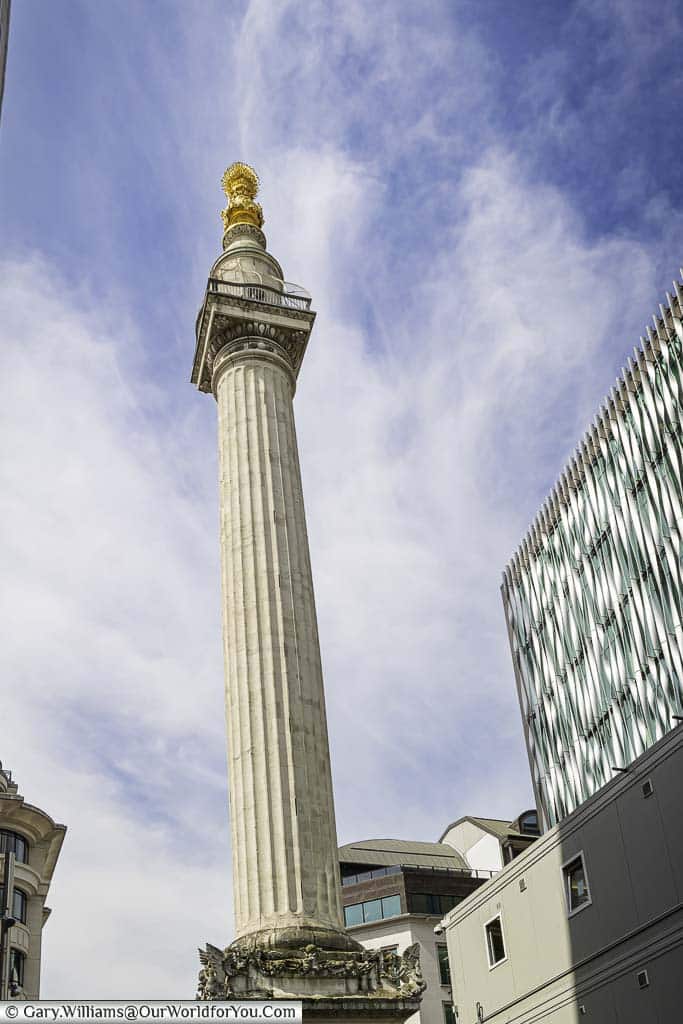
The uncontainable devastating fire that is believed to have started at a bakery in Pudding Lane destroyed a vast medieval City. It continued from the evening of Sunday 2nd September through to Wednesday the 5th obliterating everything in its wake.
To commemorate the Great Fire of London stands The Monument which was built between 1671 and 1677. The Monument is 202 feet high (62 metres), and if it were laid down, it would rest at the exact spot in Pudding Lane where the Great Fire started, (or so they say).
Places of worship in the City of London
From a cathedral to a tranquil gardenAhh, yes, the magnificent St. Paul’s Cathedral undoubtedly gets the headlines.
Sir Christopher Wren’s St. Paul’s Cathedral was erected in 1710 following the destruction of the previous cathedral in the Great Fire. This incredible structure, with its 365 feet dome took just 35 years to build.
St. Paul’s Cathedral stood relatively unscathed until it suffered damage during the Blitz in 1940 and 1941, luckily the main building survived.
The beautiful cathedral dominates London’s skyline like no other and a stunning legacy to the City. It’s from within these walls, many Royal and state occasions have taken place, including the funeral of Admiral Nelson, and the Silver, Golden and Diamond Jubilees of Queen Elizabeth II.
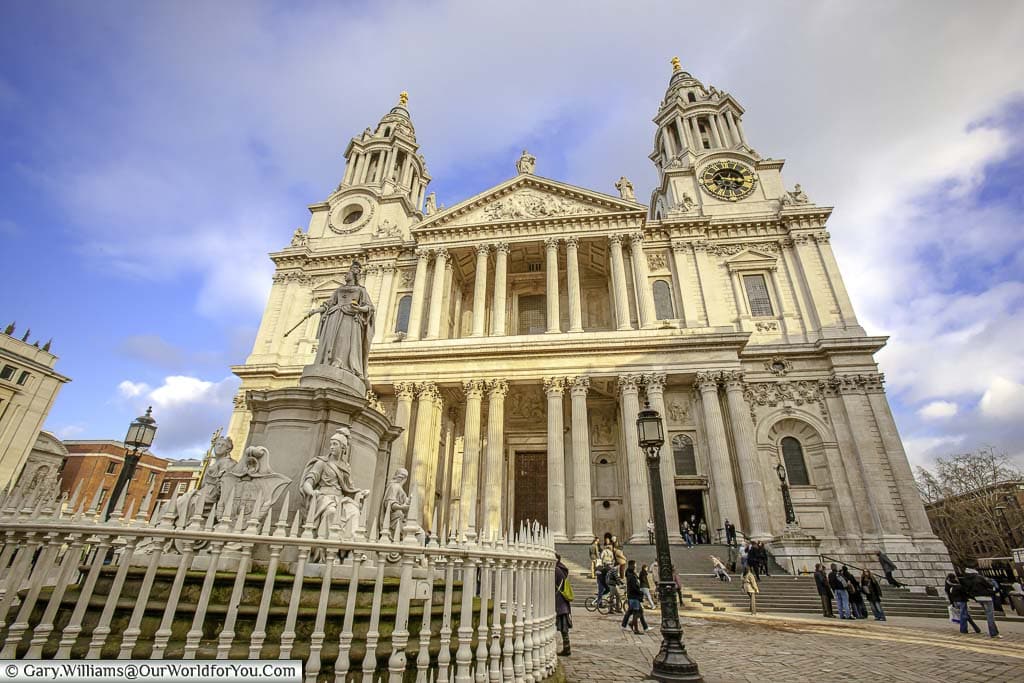
West of St Paul’s Cathedral just off of Fleet Street is St Brides Church, and noticeable by its delightful church spire erected in the shape of a ‘wedding cake’.
A succession of churches has stood on this site from the 7th-century, and once again the Great Fire devoured the church and left it in ruins. It was Sir Christopher Wren’s design in 1675 that can still be seen today from miles around.
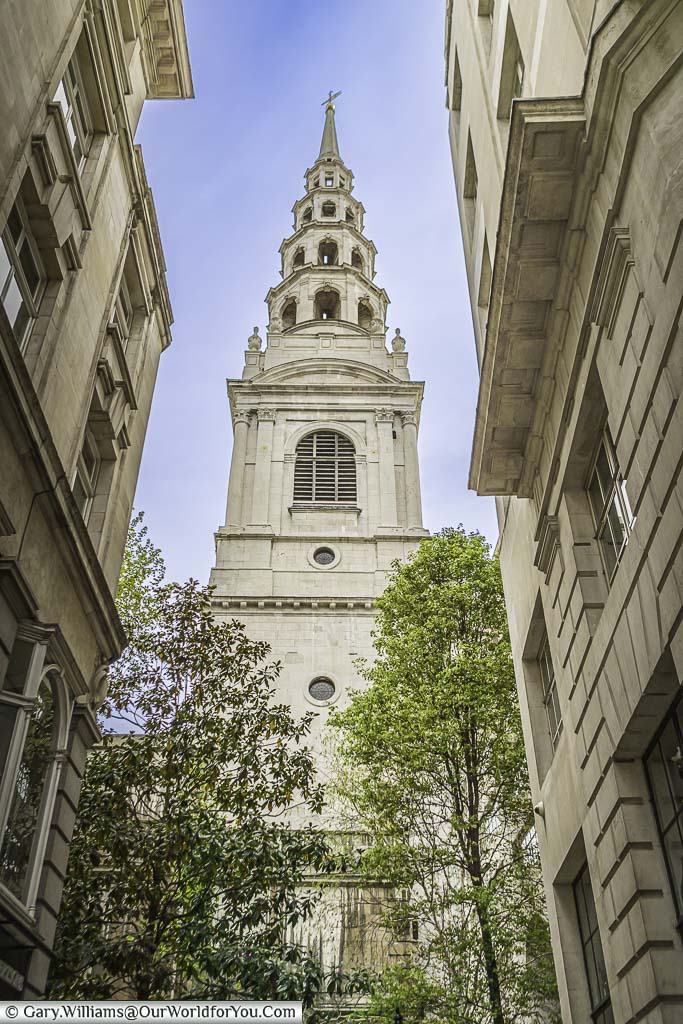
A little further west in the heart of the legal district of London you’ll discover Temple Church. This incredible church was built by the Knights Templar, the soldier-monks who protected pilgrims to the Holy Land during the crusades.
Weave your way amongst the ancient lanes to seek out Temple Church, as its history is astonishing. The round nave is the oldest and most distinctive part of the church and was consecrated in 1185, which was believed to be in King Henry II's presence.
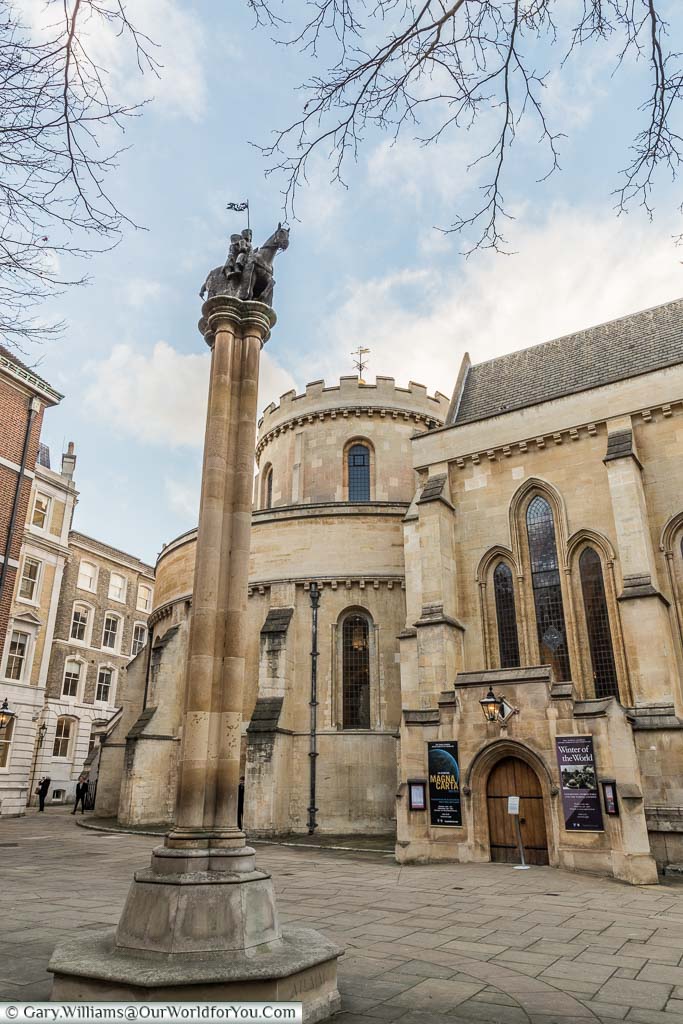
Now if you want to call yourself a true cockney, you need to have been born within earshot of the ringing of the ancient Bow Bells.
The Church of St Mary-le-Bow along Cheapside is another of Sir Christopher Wren’s churches built in 1683 and famous for its bells.
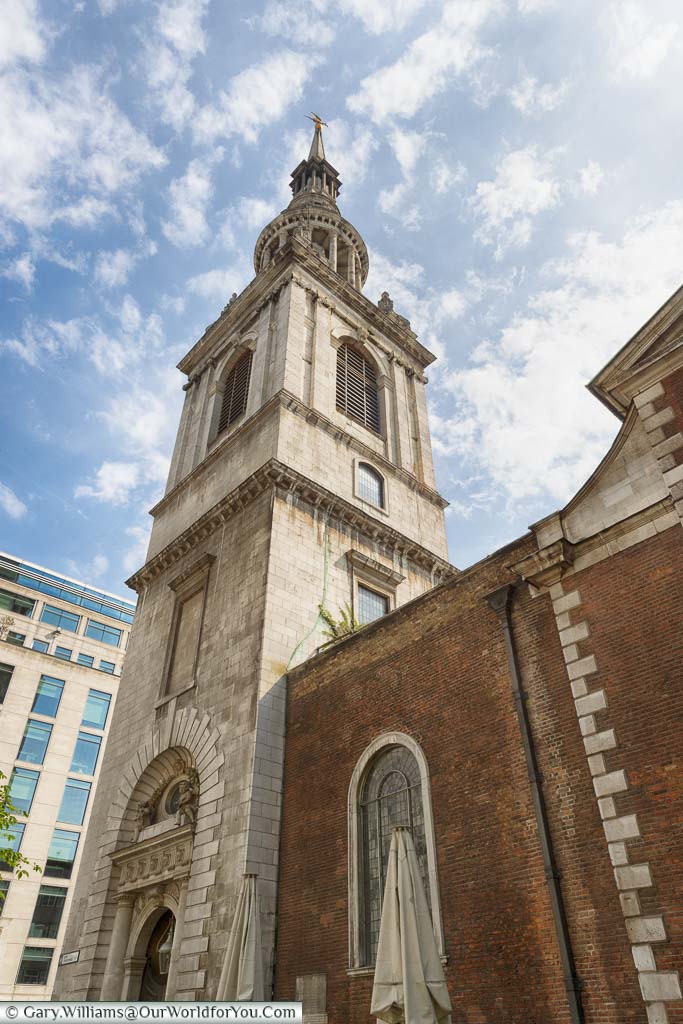
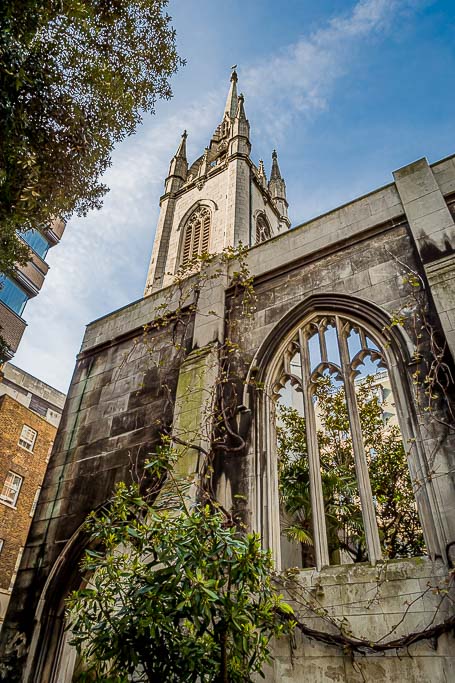
One church that had been resurrected one too many times is St Dunstan-in-the-East. The Church of St Dunstan was originally built around 1100.
It has been repaired and rebuilt over many years and was severely damaged in London's Great Fire. The steeple and tower that remain today were designed by Sir Christopher Wren.
However, during the Blitz in 1941, St Dunstan-in-the-East took a huge hit and was never rebuilt as a whole church. Nonetheless, I love it as it is, the ruins of the beautiful tranquil retreat have been given a new lease of life and transformed into a peaceful oasis to escape the hustle and bustle of city life.
It’s good to talk!
City of London districts
Which one is your favourite?Every time Gary and I re-visit London, we love to choose a district and uncover as much as we can old and new. One district, in particular, I found fascinating was Smithfield, there is so much history in such a tiny region.
Not only is Smithfield home to the 12th-century meat market and St Bartholomew’s Hospital, which is England’s oldest continually running hospital since 1123, it also holds some dark history.
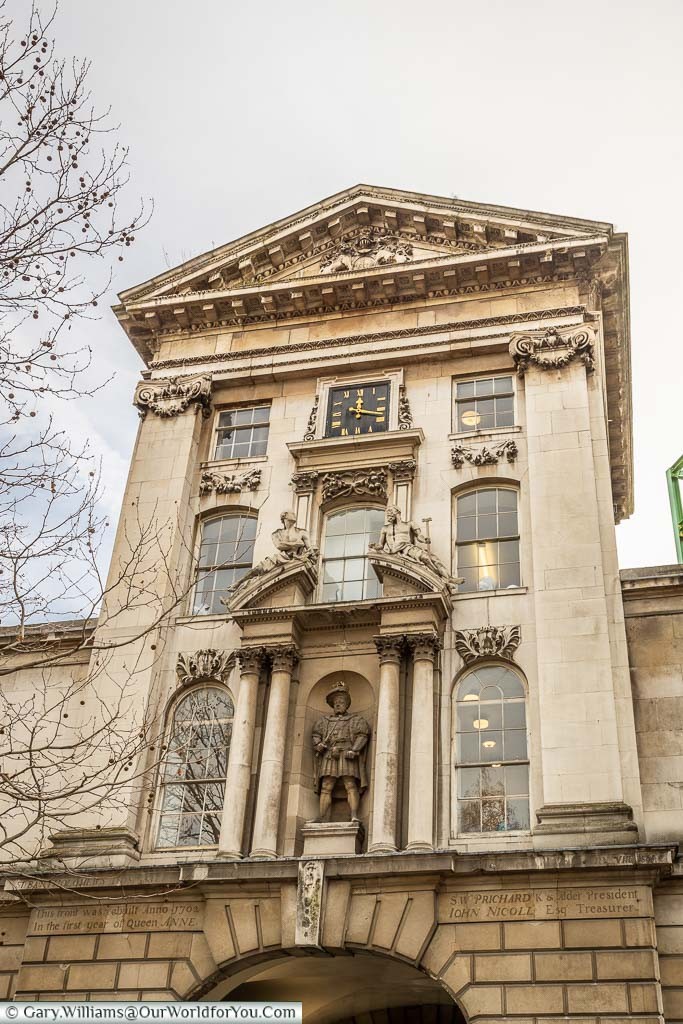
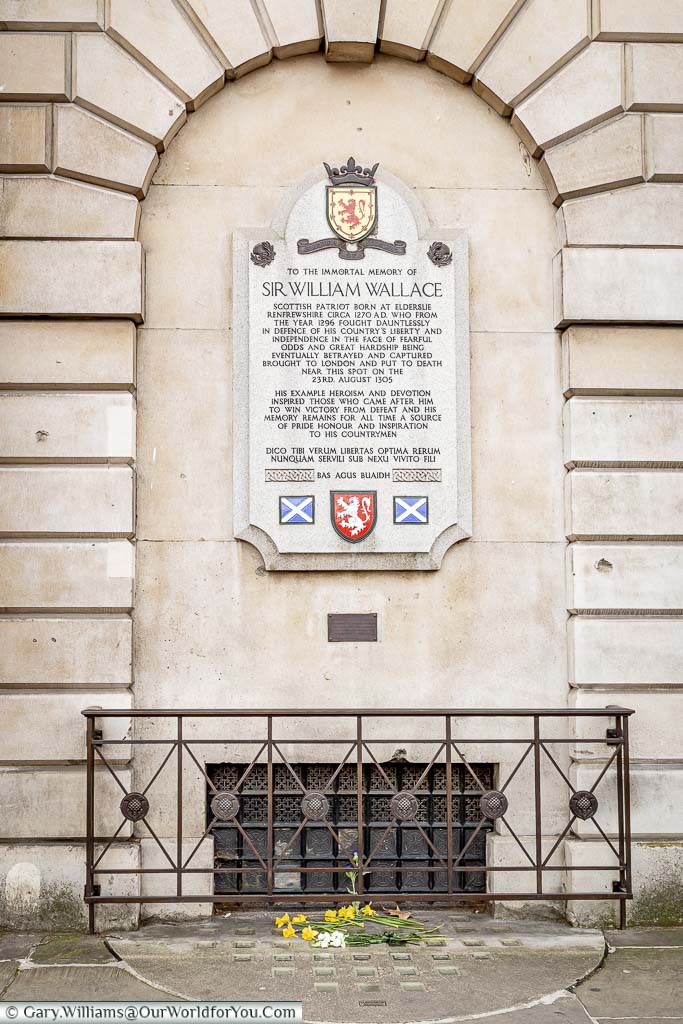
It was at Smithfield that Sir William Wallace was executed in 1305 and hung, drawn and quartered. A plaque marking the nearby spot stands very modest on the side of St. Barts wall.
Further along, on the same wall are scars from the First World War. The marks still remain from the First World War Zeppelin raids on 8th September 1915 and 7th July 1917.
There are so many intriguing parts of the City of London, the other region I enjoyed digging into was all around Bank Station, in the heart of the City.
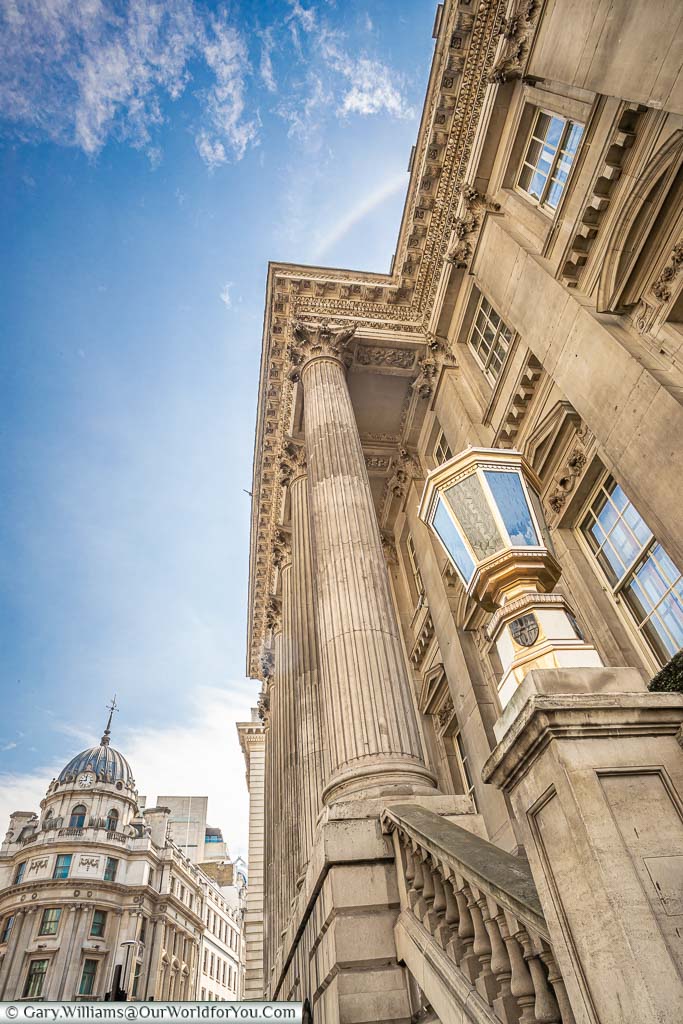
A little retail therapy
Style in the City of LondonThere’s certainly no reason why you can’t treat yourself to a little shopping while you’re in the City of London. One New Change at the western end of Cheapside has been transformed into a stylish retail complex.
It opened in 2010 and is the only large shopping centre in the City.
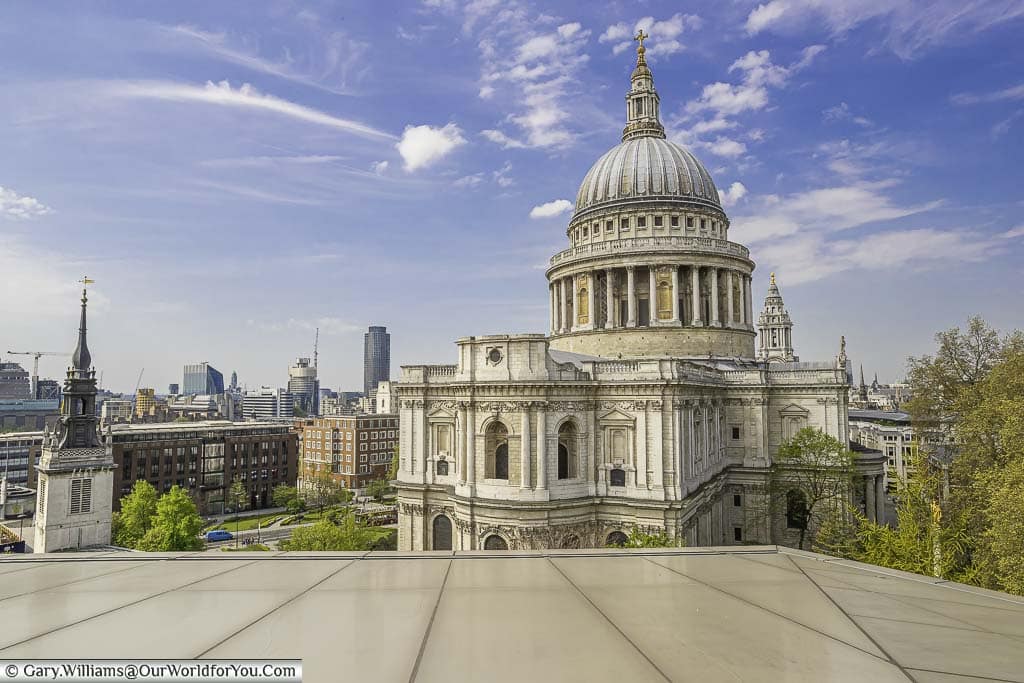
Although putting retail therapy aside, I highly recommend heading up to the roof-top terrace. The Roof Terrace is free to visit and gives you magnificent views across the dome of St Paul’s Cathedral and London’s skyline.
Due to current restrictions keep track of the re-opening of the Roof Terrace on One New Change website.
City of London drinking holes
From the rooftop to the cellarsWhether you’re in the City very early in the morning or very late in the evening, there is always somewhere to have a tipple.
Due to the nature of the working hours of the market porters in Smithfield meat market, a refreshing pint was occasionally needed after a long-hard shift. To most people, this was breakfast; however, to these lads, it was a quick pint after work with your mates.
Times have changed over the decades, and there are now only a couple of pubs open early in the morning for these porters. They are the stylish Art Nouveau “Fox & Anchor” on Charterhouse Street and “The Hope” on Cowcross Street.
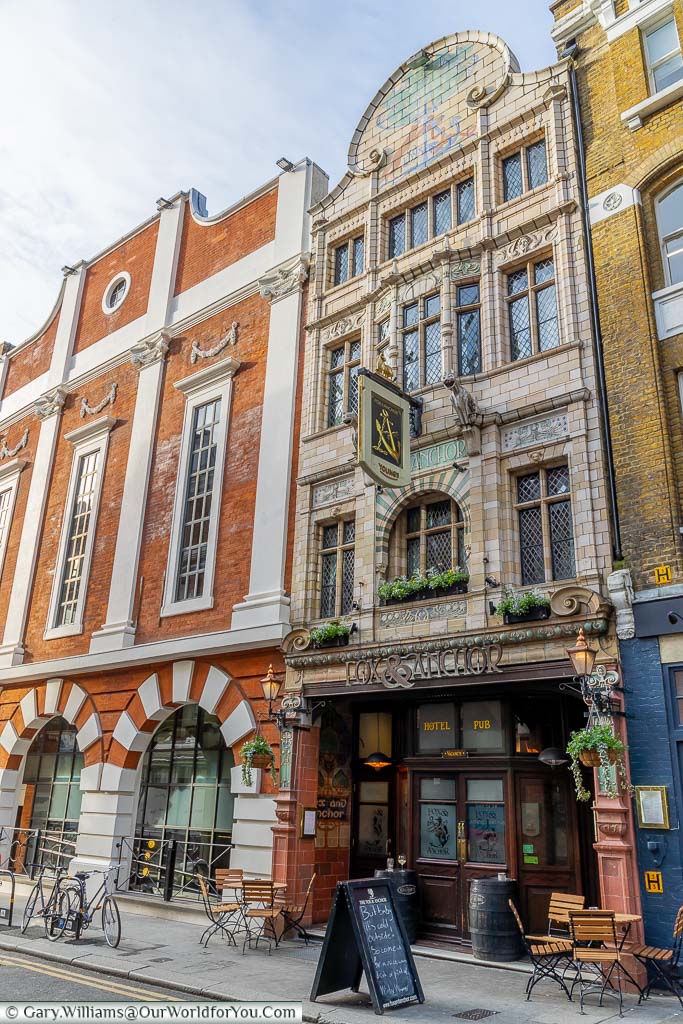
However, if you fancy soaking up centuries of history, I suggest a visit to Ye Olde Cheshire Cheese, just off Fleet Street.
The original tavern was destroyed in 1666 by the Great Fire. Yet there was no delay in rebuilding it as the current dwelling dates from 1667.
Dark wood panelling lines the walls, cosy open fireplaces warms the cockles of your heart, and a maze of tiny rooms and secret snugs lead you up the creaky stairs beyond.
Ye Olde Cheshire Cheese has had much literary clientele pass through its doors, including Charles Dickens, Sir Arthur Conan Doyle, Mark Twain and Alfred Tennyson, to name a few.
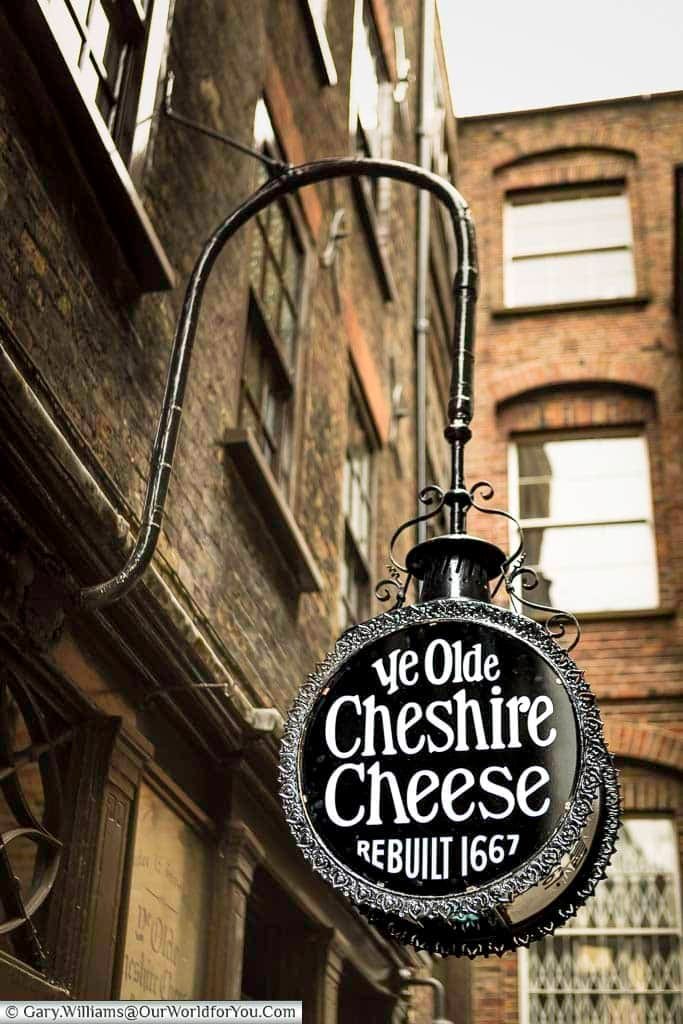
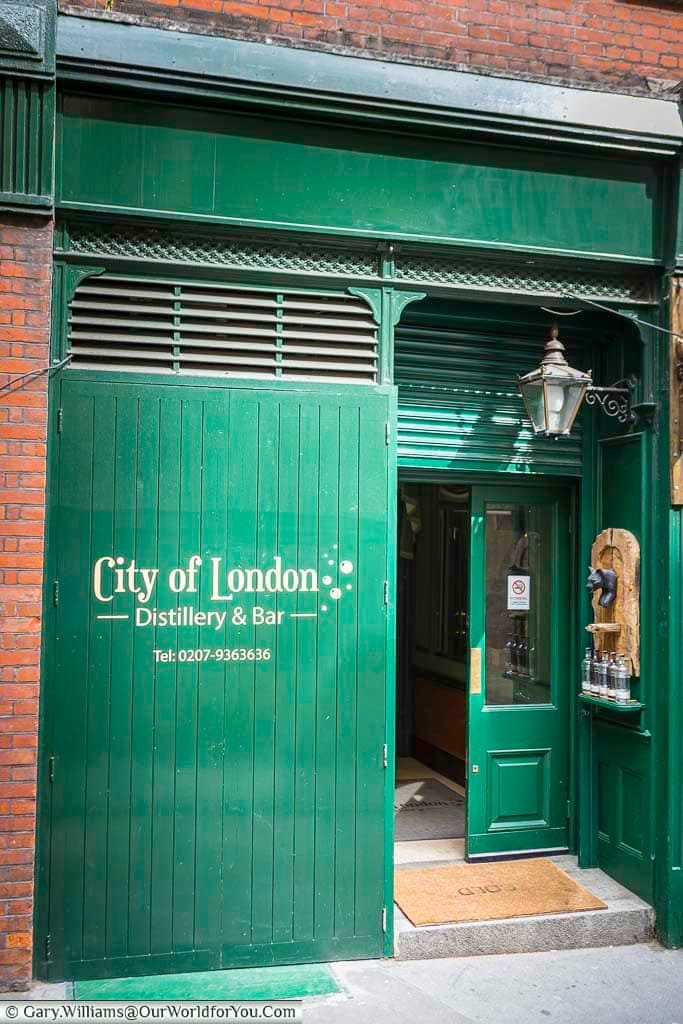
If gin is your tipple of choice, I recommend heading to the City of London Distillery on Bride Lane. The only gin distillery in the City.
The distillery threw open its doors in 2012. It began producing gin from its two original copper stills called Clarissa and Jennifer (named after the British cooks ‘The Two Fat Ladies’).
In 2016 a new still was introduced named Elizabeth for the Queens 90th birthday.
The first gin produced here was the classic London Dry Gin. This has now been shadowed by eight mouth-watering sidekicks with, spicy, fruity and aromatic tones.
* This post may contain links to affiliated sites where we earn a small commission at no additional charge to you.
